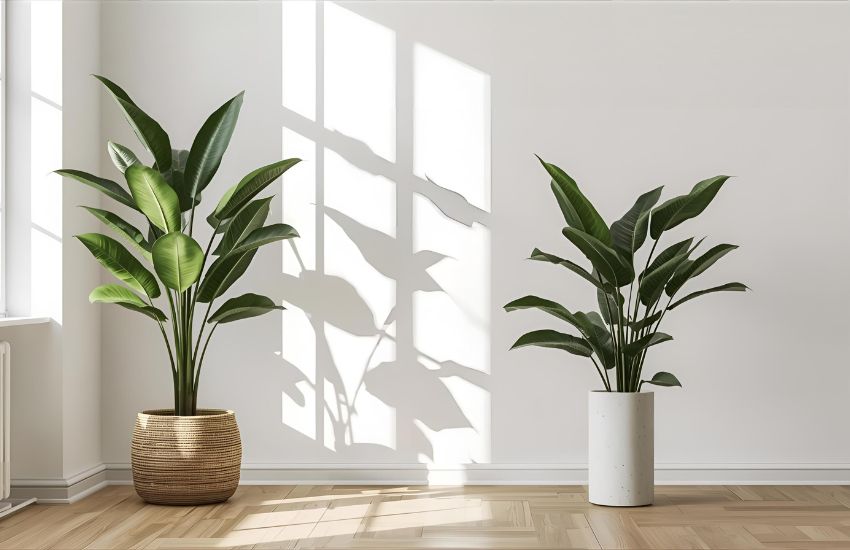ZZ plants, scientifically known as Zamioculcas zamiifolia and often called the Zanzibar Gem, are prized for their glossy, green leaves and remarkable resilience. You will find that this easy-care houseplant thrives even when you provide minimal attention, making it an ideal choice for busy spaces or low-maintenance indoor plant enthusiasts. Its thick rhizomes store water efficiently, allowing the plant to survive periods of irregular watering without losing vitality.
You will also appreciate that the ZZ plant adapts well to low light or indirect light, though it flourishes best near a well-lit spot that avoids harsh sun. Its sturdy foliage resists common pests, and each leaflet grows with a polished sheen that adds elegance to any home or office. Propagation is simple through leaf or stem cuttings, letting you grow a new plant from an existing one with minimal effort.
In this guide, you will discover practical tips on watering, positioning, and repotting your easy-care ZZ plant, along with insights into propagation, pest prevention, and maintaining vibrant green leaves. By following these steps, you can enjoy a thriving indoor plant that brings beauty and life to your space.
How to Grow ZZ Plant: Essential Plant Care Tips for a Thriving Zanzibar Gem

Growing a ZZ plant (Zamioculcas zamiifolia) in your home or office is a rewarding experience for both new and experienced plant parents. Native to eastern Africa, this drought-tolerant plant is part of the aroid family, closely related to philodendron, anthurium, and aglaonema. Its hardy ZZ plant reputation makes it one of the most low-maintenance foliage plants for indoor spaces.
Light and Placement
The ZZ plant thrives in bright indirect light but tolerates low light levels, making it perfect for a wide range of conditions. While it can tolerate low light conditions, avoid direct sunlight, which may scorch its oval-shaped leaves and turn them yellow. For optimal growth, place your plant where it receives best in bright filtered light, enhancing its natural shine and lush green color.
Soil and Watering
To grow ZZ successfully, use a well-draining potting mix designed for aroids. This plant’s large potato-like rhizomes store water, allowing the plant is able to survive months without water. Allow the soil dries thoroughly between waterings and let it dry out completely to prevent overwatering, a common cause of root rot. As a drought-tolerant and hard to kill cycad-like plant, ZZ can thrive even in low humidity environments.
Fertilizer and Maintenance
Feed your ZZ plant lightly with fertilizer every few weeks during the growing season. This helps maintain its vibrant foliage and supports healthy rhizome development. Regular dusting of the oval-shaped leaves also ensures optimal indoor air purification.
Propagation Techniques
Propagating ZZ is straightforward, though it requires patience. You can propagate through leaf cuttings or by dividing large potato-like rhizomes. Propagating ZZ allows plant owners to expand their collection or share a low-maintenance plant with friends.
Ideal Growing Conditions
The ZZ plant is an easy to care, low-maintenance plant that thrives under a wide range of conditions. It is exceptionally tolerant, surviving without water for extended periods while maintaining healthy foliage. Its adaptability makes it perfect for home or office environments, ensuring a lush and elegant green presence even with minimal attention.
Conclusion
The ZZ plant, a rhizomatous member of the family Araceae, is a tolerant of many conditions indoor plant that brings vibrant green foliage and green leaflets to any space. Native to east Africa, this newer variety is exceptionally resilient, able to withstand periods of drought and forgiving when you forget to water. Its half-strength fertilization routine helps maintain healthy growth without overwhelming the plant, while its natural capacity to remove indoor toxins such as benzene, toluene, ethylbenzene, and xylene improves indoor air quality.
While the ZZ plant contains calcium oxalate, making it mildly toxic if ingested, it remains a safe and elegant addition when placed thoughtfully. Studies, including research from the University of Copenhagen, highlight the ZZ’s efficiency in purifying air alongside other aroids like peace lily.
Whether you are a seasoned plant parent or just starting, the ZZ plant’s rhizomatous growth, low-maintenance care, and striking green foliage make it an ideal choice for any home or office. Don’t wait—bring home a hardy ZZ plant today and enjoy a lush, tolerant of many conditions, and air-purifying companion that thrives even under minimal care!
Frequently Asked Questions (ZZ Plant Care: Easy-Care Tips for Zamioculcas Zamiifolia, the Zanzibar Gem)
How do you take care of a Zanzibar gem?
To care for a Zanzibar Gem (ZZ plant), place it in bright, indirect light or low light, water sparingly when soil is dry, and use well-draining soil. Avoid overwatering, maintain moderate humidity, and fertilize lightly during growing season. Wipe leaves to remove dust.
Is ZZ plant lucky at home?
Yes, the ZZ plant (Zamioculcas zamiifolia) is often considered a symbol of good luck, prosperity, and positive energy in homes. Its glossy, upright leaves are believed to attract wealth and success, making it a popular choice for indoor spaces, offices, and feng shui arrangements.
Where is the best place to put a ZZ plant?
The best place for a ZZ plant is in bright, indirect light, although it can tolerate low-light conditions, making it ideal for offices or corners of a room. Avoid direct sunlight, which can scorch its leaves, and place it where temperature remains stable, away from drafts or heaters.
How do you care for a ZZ plant indoors?
To care for a ZZ plant indoors, place it in bright, indirect light or low-light areas. Water sparingly, allowing soil to dry between watering. Use well-draining potting soil, avoid overwatering, and wipe leaves occasionally. ZZ plants thrive in average room temperatures and are low-maintenance.
